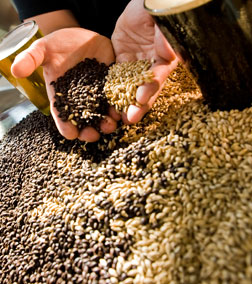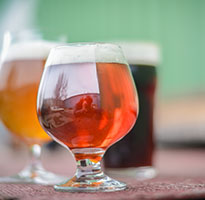
The Romance Behind Malt
A Report from Malt School in Wisconsin
I had the privilege of attending the second-everBriess Malt & Ingredients Co.’sBrew Workshop in Chilton, Wis., as a representative from the Brewers Association. I’ve said this before (after I attended the hop harvest, no less) and I’ll say it again: the romance behind craft beer’s ingredients is alive and well, and as a community, we need to continue to breathe life into the stories behind all that goes into beer including hops, yeast, water and of course malted barley, the glorious fermentable behind craft beer.
A great example of the stories behind this particular ingredient can be seen in: “The Return of the Micro-Maltsters: A Locavore’s Craft Beer Dream” by Anne-Fitten Glenn.
Hopefully, getting in touch with the source of beer’s ingredients is at the forefront of every craft brewer’s mind, because the more involved the brewing community is (both large and small), the better the relationship, quality, and diversity offered from today’s suppliers will be.
The workshop was two solid days of both classroom instruction and touring. We visited both the Briess malt house and the extract facility, which, as a 500-barrel brewhouse, would literally be considered Wisconsin’s second largest brewery if they actually fermented what they made.
Briess has been around since 1876 and has grown to become a huge supplier of specialty malt. The brewhouse is also focused on creating extract for their brewery and food industry clients. During the workshop, Director of Malting Operations Dave Kuske gave an amazing presentation and sensory demonstration. We sampled the base and specialty malts along with extracts from each malt in a tea form that was diluted 50 percent. Then they served beers made from those specific malts, with some of the beers being made at their pilot brewery. I’ve never had the pleasure of experiencing a three-tier tasting like that until now. Malt, extract, beer—a nice full circle indeed.
外卖的车间
- The process behind malting barley is something every brewer should consider experiencing.
- Barley should not be viewed as a commodity. It is harvested once a year unless you find a winter crop.
- Green malt is unkilned/roasted malt.
- Specialty malts usually begin as finished base malts that are then roasted.
- Kilned malt has about an 18-month shelf life if stored properly. The recyclable bags we’re used to seeing can pick up moisture, so the worst place to store malt is in walk-in coolers.
- Prior to malting, barley attributes are tested including diastatic power (enzymatic power) measured indegrees Lintner, so maltsers know how much they will have to manipulate the grains during the malting process.
- Dry roasted = mealiness. Wet roasted = glassiness.



